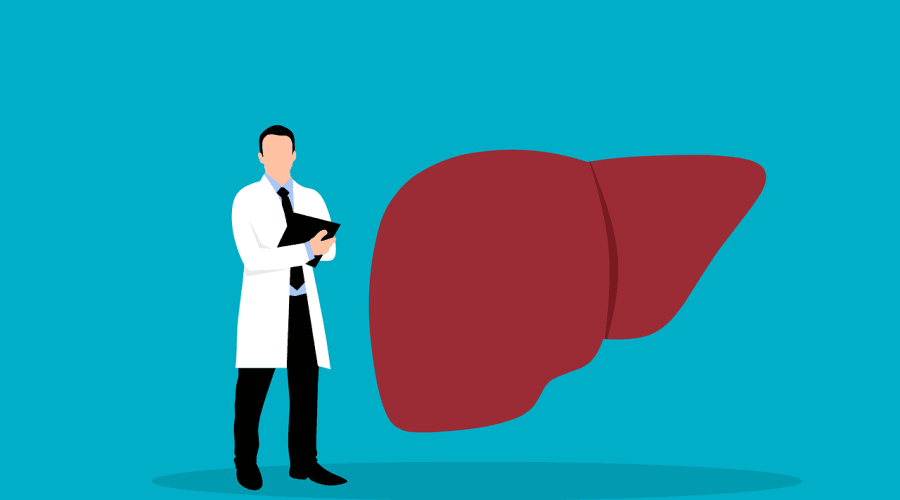
Tenofovir disoproxil fumarate (TDF)- and tenofovir alafenamide (TAF)-based antiretroviral therapy (ART) regimens reduce the risk for liver disease progression among patients with HIV and hepatitis B virus (HBV) coinfection, according to study results published in Infectious Diseases and Therapy.
Liver disease induced by HBV is exacerbated with HIV coinfection. Both TDF– and TAF-containing ART regimens have demonstrated efficacy at reducing HBV replication. However, long-term data about liver outcomes with ART are lacking.
To bridge this knowledge gap, researchers conducted a retrospective study using data from the United States HealthVerity claims database. Adults (N=3095) who initiated ART for HIV between 2016 and 2024 and had HBV coinfection were evaluated for cirrhosis, liver decompensation, hepatocellular carcinoma (HCC), or liver transplant on the basis of ART regimen. Kaplan-Meier survival curves, log-rank testing, and Cox proportional hazards models were employed for statistical analysis.
Among patients who initiated TAF-based (n=2339), TDF-based (n=408), or nontenofovir (n=348) ART, the mean ages were 47.2, 45.7, and 49.3 years, 75%, 69%, and 78% were men, 31%, 31%, and 25% were Black, and they had a Charlson Comorbidity Index of 1.52, 1.66, and 1.56, respectively.
Overall, the time to advanced liver events was prolonged with TAF and TDF ART regimens compared with other regimens (P <.01).
A total of 155 of the 2078 patients who initiated TAF-based ART, 30 of the 368 who initiated TDF-based ART, and 41 of the 311 who initiated other ART experienced an adverse liver event during follow-up. In adjusted analyses, there was a reduced risk for advanced liver disease events with both TDF-based (adjusted hazard ratio [aHR], 0.45; 95% CI, 0.27-0.74) and TAF-based (aHR, 0.55; 95% CI, 0.38-0.79) ART when compared with nontenofovir-based ART.
Stratified by event, TAF-based ART was associated with lower risk for HCC (aHR, 0.28; 95% CI, 0.11-0.77), cirrhosis (aHR, 0.42; 95% CI, 0.26-0.68), and liver decompensation (aHR, 0.63; 95% CI, 0.42-0.95) and TDF-based ART was associated with lower risk for liver decompensation (aHR, 0.46; 95% CI, 0.26-0.82) relative to other ART.
In a sensitivity analysis that used a propensity score matching approach, the relative risk (RR) for advanced liver disease was significantly lower at 2 years with TDF-based ART (RR, 0.52; 95% CI, 0.13-0.91) and at 5 years with either TDF-based (RR, 0.48; 95% CI, 0.07-0.88) or TAF-based (RR, 0.55; 95% CI, 0.29-0.82) ART relative to nontenofovir-based ART.
Among individuals with alanine transaminase (ALT; n=160) and aspartate aminotransferase (AST; n=146) data, ALT levels were relatively stable whereas AST levels had more variability, in which levels decreased among TDF-based ART recipients and increased among other ART recipients, but with relatively stable long-term trajectories.
Study limitations include the retrospective design and reduced generalizability to other world regions, particularly in areas with higher HIV and HBV coinfection rates.
The researchers concluded, “These findings support guideline recommendations for use of TAF or TDF as part of a dual [nucleoside reverse transcriptase inhibitor] backbone to improve outcomes for people with HIV/HBV.”
Disclosure: This research was supported by Gilead Sciences Inc. Please see the original reference for a full list of disclosures.
By Jessica Nye, PhD
References:
Chuo C-Y, Zachry W, de Boer M, Telep L, Tao L. Advanced liver disease events in people with HIV and hepatitis B virus coinfection initiating antiretroviral therapy in the United States. Infect Dis Ther. Published online July 15, 2025. doi:10.1007/s40121-025-01192-5
Source : Infectious Disease Advisor
Related HIV and Co-Infections News
Get involved
Are you living with HIV/AIDS? Are you part of a community affected by HIV/AIDS and co-infections? Do you work or volunteer in the field? Are you motivated by our cause and interested to support our work?
Subscribe
Stay in the loop and get all the important EATG updates in your inbox with the EATG newsletter. The HIV & co-infections bulletin is your source of handpicked news from the field arriving regularly to your inbox.
